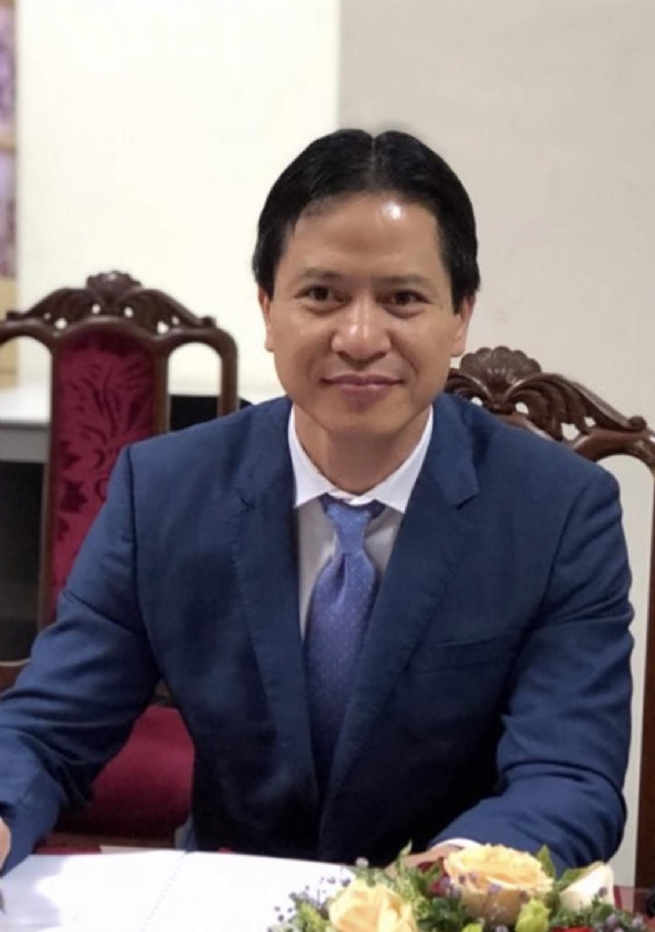2:54:32 PM | 1/20/2020
After nine years, the National Target Program on New countryside construction has given a total facelift to socioeconomic development, and completely changed the material and spiritual life, and perception of people on new countryside construction from the past. The program is “massive, comprehensive and historic,” as described by Prime Minister Nguyen Xuan Phuc. Vietnam Business forum Magazine has an interview with Mr. Nguyen Minh Tien, Director, chief of coordinating office of the National Target Program on New countryside construction, to learn more about the program in the coming time. Minh Ngoc reports.
 |
Could you please tell us about the outcome of the Program on New Countryside Construction and expectations for it in 2020?
2019 has been a very special year for the central coordinating office of New countryside construction to review 10 years of carrying out the National Target Program on New countryside construction launched by the central Steering committee. The year marked great progress of the Program on New countryside construction in both quality and quantity. The program fulfilled its plans 18 months ahead of schedule. Accordingly, by December 2019, the country had 4,806 communes meeting new countryside construction standards (or 54% of the total), and, on average, a commune fulfilled 15.66 criteria, with no communes having less than five criteria. As many as 111 out of 664 district-level units in 40 centrally run provinces and cities are recognized to have completed/met new countryside construction tasks by the Prime Minister. Eight provinces and cities have all communes recognized to meet new countryside construction standards (i.e. Thai Binh, Nam Dinh, Ha Nam, Hung yen, Da Nang, Binh Duong, Dong Nai and can Tho). in 2019 alone, the country mobilized about VND378,016 billion for the National Target Program on New countryside construction. These really impressive figures are praised by Prime Minister Nguyen Xuan Phuc as “Massive, comprehensive and historic”.
In 2020 and in 2021-2025, the central coordinating office of New countryside construction will strive to fulfill the task of advising and assisting the central Steering committee and the Ministry of Agriculture and rural Development to urge and direct ministries, central agencies and localities to speed up the implementation of new countryside construction. Specifically, by the end of 2020, the country will strive to have at least 59% of communes fulfilling new countryside construction standards and at least 10 more district-level units being recognized to meet/fulfil new countryside construction standards by the Prime Minister.
What are your specific orientations to realize national targets of building rural areas in the coming time?
In the next period, from 2021 to 2025, the committee will base on the National Assembly’s request for strong focus on new countryside construction to bring wealthy and prosperous material and spiritual life of rural people, come close to urban areas; build synchronous, modern rural socioeconomic infrastructure which is closely connected with the urbanization process; strongly develop the rural economy to lay the groundwork for advanced production level, professional farmers and highly competitive products; associate agricultural production with trade, service and tourism development and active response to climate change.
We will continue to appropriately quantify the appearance, quality, width and depth of new countryside construction based on the perfection of new countryside construction criteria at the commune, district and village levels, advanced new countryside construction model and exemplary new countryside construction model. At the same time, it is necessary to improve and perfect the method of assessing new countryside construction criteria to ensure science and substance, improve the quality of new countryside construction, achieve intensive, effective and substantive development, boost grassroots movement to engage the public involvement, and select underlying communes for new countryside construction movement.
The One Commune One Product (OCOP) Program is being carried out by provinces and cities and is expected to give a real facelift to the rural economy. What are the challenges in scaling up the program nationwide?
As the program is scaled up, it addresses many problems in identifying main products with strong competitive advantages: Trade promotion is still weak; household businesses still account for a high share; product processing is still simple, unlinked; product quality management lacks proper attention; State management is still inadequate in production planning, mechanisms and policies on resource mobilization and market connectivity; people have not successfully commercialized traditional products; and product standardization to meet consumer and market requirements lacks serious attention. Not many ocoP products have been introduced into supermarket chains. in order for the OCOP program to be truly a driving force, it is necessary to have specific policies and strong investment for agriculture to shape an advanced, highly valued agriculture where enterprises are locomotives for farmer reorganization and enterprises play a central role and get support policies for merchandise production.
What policies are needed for a company to successfully start an OCOP business?
To draw enterprises to invest in and start an agricultural business, policies are needed to facilitate them to apply cutting-edge technology to production in place of traditional forms; effectively plan and expand infrastructure investment; and allocate land for agricultural development and build concentrated high-tech production zones. in addition, it is necessary to have investment capital for scientific initiatives for research and manufacture of machinery and equipment necessary for production. it is important to deal with existing difficulties and obstacles and facilitate enterprises to make investments, especially those that cooperate with farmers in production along the value chain; strengthen the close cooperation of authorities, scientists, enterprises and farmers in production, processing and consumption; mobilize resources and cooperation for development; and enlist all capital sources from the government, international organizations and non-governmental organizations.
Thank you very much!
Source: Vietnam Business Forum